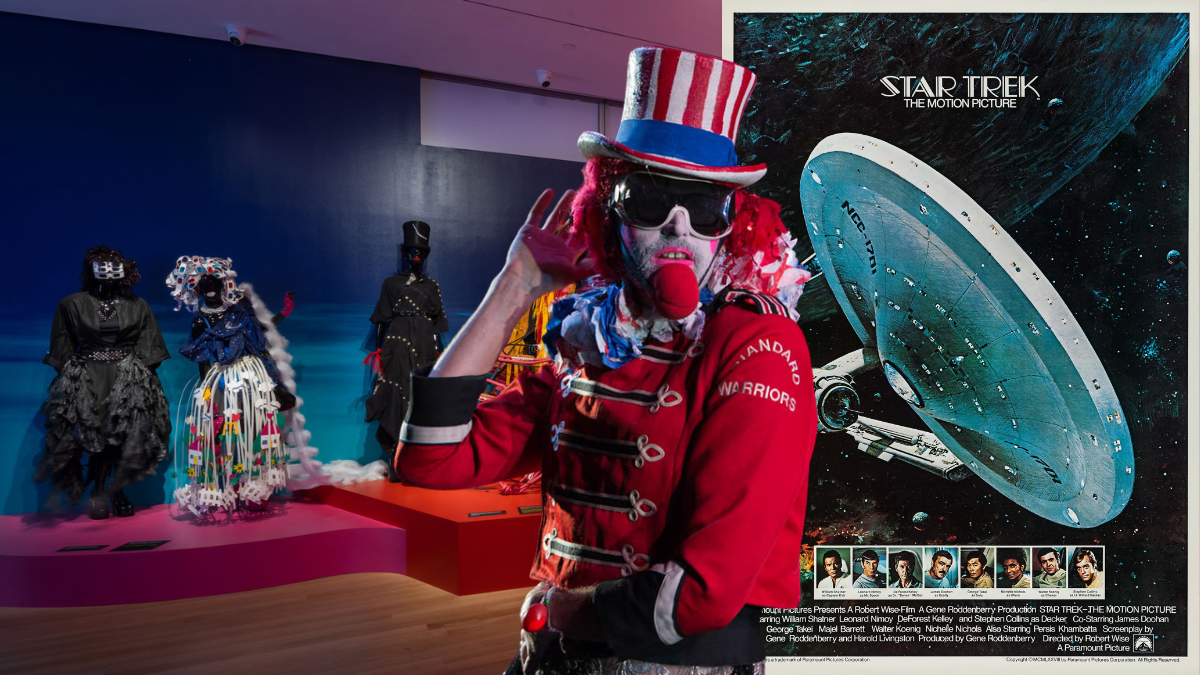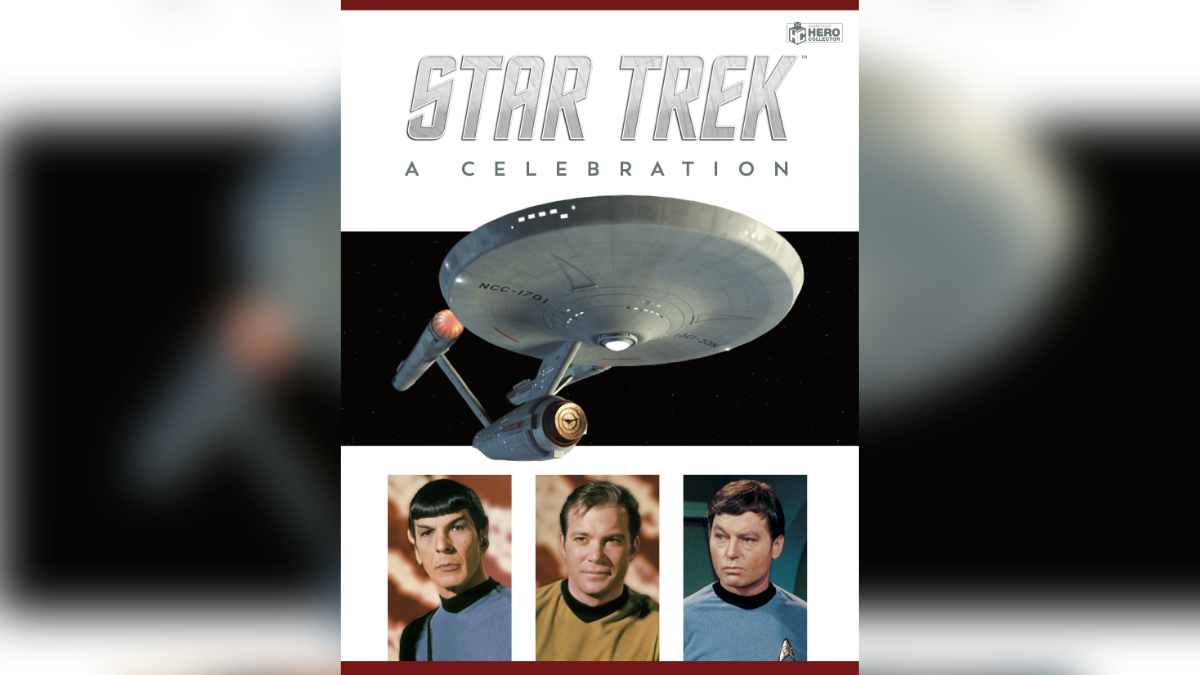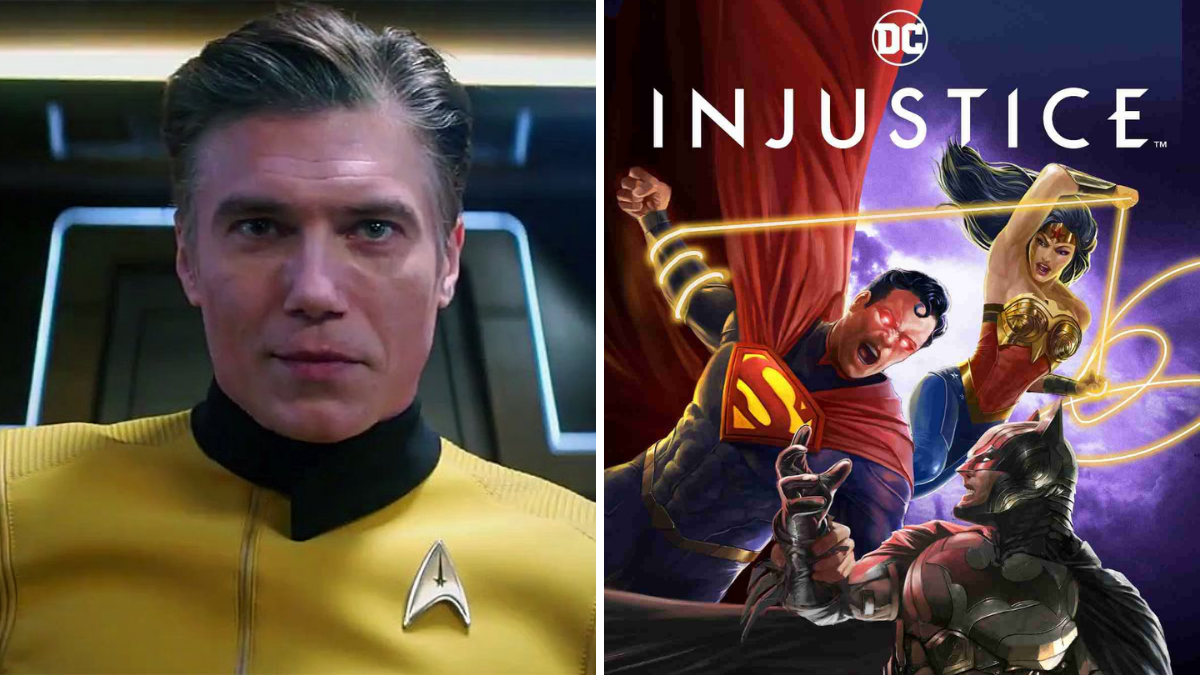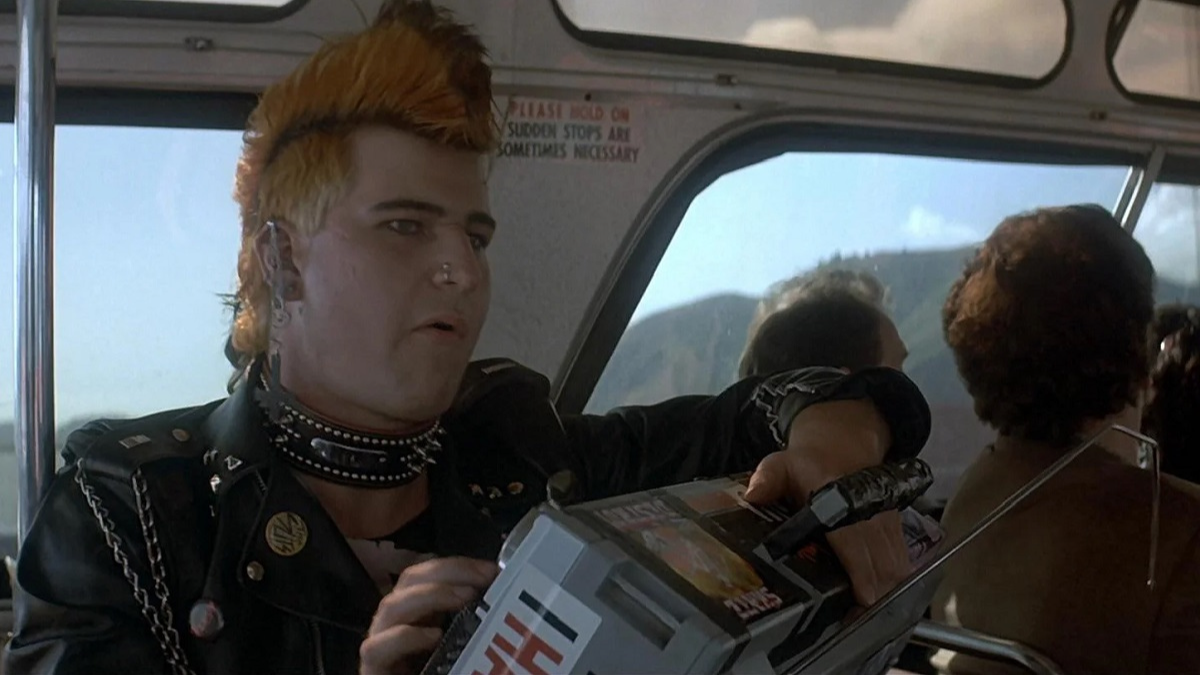INTERVIEW: Concept Artist Machine Dazzle On Self-Dioscovery and Why Star Trek: The Motion Picture Means So Much To Him

Machine Dazzle will be showing STAR TREK: THE MOTION PICTURE as part of a film series in October.
OCTOBER 24, 2022 - As we noted in the most recent events post, Star Trek: The Motion Picture will be featured tomorrow night as part of a film series accompanying the exhibition of concept artist Machine Dazzle at the Museum of Arts and Design. DSTN had the chance to talk with Machine about his background, work, and his relationship with Star Trek. The following conversation is edited for length and clarity. It also contains some gay slurs.
First, thanks so much for taking the time to let us ask a few questions about your work and its relation to Star Trek. It's an honor to feature someone whom The New Yorker calls a "theatrical genius!"
Yeah, well, ain't that the gospel truth! Look, I don't call myself that. Other people call me that. But I'm not going to disagree. Yeah, I mean, it behooves me to agree with them!
Why don’t we get up to speed for those who might not be aware of who Machine Dazzle is and what you do. Can you talk about your current work and your approach to costumes and sets and performances, which you've said have narrative elements of their own?
I describe myself as an emotionally driven, instinct-based concept artist trapped in the role of costume designer. I was born in Pennsylvania, but I grew up in Texas, in Idaho, and Colorado, and I moved to New York in 1994, and I started living life on my terms. I always loved, you know, fantasy. I felt like it was the only narrative. So growing up in the 70s and 80s, even into the 90s, there was no clear narrative. Yeah, except in fantasy. So that's where I had to live, you know, to kind of survive. And I moved to New York and I started experimenting with costumes on myself, my own body. Just like different kinds of drag and outrageousness. I experimented on myself and I made myself things and I started to get better. People loved what I was making and so they invited me to make it on their bodies. There were dancers and drag queens and just people of the night. And then I started doing shows, and they were small at first and then the shows got bigger and now that's basically what I do. For years, I had a day job, and now I live off of my art. And so it's been a whole journey, right? I work with stories. I like things to look fun and cool and beautiful and interesting. But I'm really more of an idea person. I'm a storyteller, and so when I wear something, I'm wearing a story. It's not just beautiful, it's not like a finely tailored garment. There's a narrative. My costumes have been described as being their own characters. But I create worlds, you know? Because it's not enough to create an outfit. The outfit has to be so much that you create the world around it also. So that it makes sense, you'll get a new context.
Before Machine Dazzle, there was Matthew Flower, who grew up in what sounds like pretty conservative environments and tough places for self-discovery. What was your journey like as you discovered your own self on your way to becoming who you are now?
From a very early age, I knew that I was different. I didn't have a word for it, but I knew that I was different particularly from the other boys, let's say. I wasn't like sexual early, I didn't know what that was, but by the time grade school was almost over, I started getting called “faggot” and I didn't even know what one was, you know? And “queer bait,” and all of those. And, you know, there was a good amount of bullying. I was fairly effeminate and I was also big. I'm 6 foot 5. I'm not the tallest person in the world, but I was always the tallest person growing up, so it's not like I was small and could hide in the corner.
Then I got older, you know, raging hormones. And I realized, yes, I was attracted to boys and men. And, of course, you have to be very secret about that. You can't be open about it. These days it's a lot easier. I think there's a lot more support. Back then there was no support. I couldn't be myself at school, I couldn't be myself at home. Because people are hating on you, you learn to hate on yourself, and that becomes normalized, and there is no other way. There's no one to tell you differently. And by the time I got to Idaho, I was definitely having suicidal thoughts. I mean, sometimes I still have them, you know, it's just part of me. Everyone talks about coming out, but you have to come out to yourself first. There were, like, glimpses of hope, you know? But then again, there's the fantasy and just holding onto my dreams and fantasy and I would lose myself in music in particular. I like to say that there's nothing visual that inspires me as much as music. When I resonate with a certain song, I see shapes, I start to make things. Music syncs my design processes. I rely on music for that.
The mention of more support these days brings me around to the Star Trek part of the discussion, how Trek is getting more attention, especially now, in terms of representation, such as the Visionary Award that the franchise recently received from Outfest. How did you come to Star Trek, and what would you say about what it means to you?
I was born in 1972, so I grew up with the original Star Trek series, just reruns on TV. The characters are very likable and they're all very distinct. And it was colorful. I loved how some of them were yellow and some of them were red, some of them are blue, you know, the primary colors, perfect for children learning. It's like it seems to go hand in hand because the toys are all like primary colors, and also when you look on the TV it's like there are all these fun characters and primary colors. I think that visuals definitely played a big part of it.
And so, you know, of course, it was sci-fi, it was fantasy. And I grew up with two brothers, one older, one younger, and we were suburban kids, so it was kind of all about television. We would lose ourselves in it, and it provided a really great family bonding moment. Particularly my older brother geeked out on Star Trek, so I felt like it was a really great chance to bond with my older brother, you know, to geek out over it. But then as I got older, of course, I was looking for a narrative that fit me. And of course, there really wasn't one. Not really. But I always loved the women characters. Of course, I loved Uhura, Nichelle Nichols. I just lived to see her. Growing up, we didn't do a lot as a family, but what we did do was go to the movies. So that was another moment of bonding, like having fun. And so, we saw the original Motion Picture together, and then of course we saw The Wrath of Khan. And then we saw the next one, so I do remember all of these.
And I remember when the original Motion Picture came out, you know, we had grown up with those episodes from the ‘60s. And then it was interesting to see them change, they were older, but they were still very much themselves. You know, they got older and we got older with them and it started to feel like family. I can't think of any other series like it, actually, where it was really a specific group of people, and they all grew older together and lived out all of these fantasies together. I always enjoyed that.
I think if you're old enough, then you can appreciate that. I was old enough to see the reruns, and so I’ve kind of seen it from the beginning in a way even though I wasn't alive. But then I grew up and I got busy, and I don't really like CGI. I prefer – like we just screened Clash of the Titans. And you know, I just love that old stop motion and Claymation. I don't know, as soon as I see CGI, I just think it's cheap looking. But that's just me. I'm too old school for my own good.
So relating to it, I mean, none of those films actually have a gay or queer character necessarily. Even George Takei was in the closet at the time. It wasn't a question because it wasn't part of his character. Yeah, he didn't play a gay character. But that was normal, and most films did not have gay characters. And if they were, they were like, really, like fruity. And they were clowns, you know, the funny character, friends of the eccentric older woman or whatever.
Now at least with Star Trek: Discovery, for example, we've got legitimate gay characters.
I don't know it, I guess I should take a peek. I’m looking forward to the discovery!
Star Trek has this philosophy of "infinite diversity in infinite combinations" – celebrating and embracing difference. How do you think that might mesh with your notion of "queer maximalism?"
I would say if the realm of infinite possibilities and infinite diversity is a school, then I would say that queer maximalism is the drama department with a major in costume. That's how I would answer that.
Speaking of queer maximalism, congratulations on your first solo exhibition, Queer Maximalism x Machine Dazzle! Alongside the ongoing exhibition, at the Museum of Arts and Design, is a series that you have curated of films that have meant a lot to you over the years. Next up in the series is Star Trek: The Motion Picture. Can you say some more about what in particular attracts you to The Motion Picture?
First of all, it was the first movie that was not the TV series, so it was the first one that I ever saw, so naturally, there's nostalgia for that. And specifically, we mentioned the female characters earlier and there was something about Lieutenant Ilia's character that was very weird and striking. Like, first of all, a bald woman. And then she's beautiful. And then she gets killed, and she comes back. Her body comes back, and there's been this transformation, and it's just so weird. As a child, I was too young to understand the real narrative and what was going on. But I do know that there was this weird transformation as in what's that little light in her throat, and what happened to her old outfit, and where did she get this new outfit? And she looks amazing. I don’t know, there was something very uncomfortable but very cool about that whole thing. And I know that might sound very superficial, but seeing something like that when you're very young and very impressionable, it's like, what just happened, you know? It was very informative.
Full disclosure, I think probably The Wrath of Khan might have been even more so. Maybe I should have been screening that one. But there's something about the original one. I wanted to go back to that because, in the museum, we're telling my story.
Finally, Queer Maximalism x Machine Dazzle is underway through February 19, but are there other projects underway or coming up that people should know about?
Yeah, they should know about my new album! It's called Treasure, and [the songs are] stories about my relationship with my mother. [It’s available on multiple platforms, including Bandcamp, Spotify, and iTunes.]
I'll be performing at the Metropolitan Museum of Art [in December] with the Catalyst Quartet. I'll be doing a visual performance while they perform the Goldberg Variations.
And I am working on the next big Taylor Mac Show, which is called The Bark of Millions, and I'll be designing and making costumes for it, and I'm also part of the ensemble, singing and dancing in it.
And I'm designing an opera with Opera Lafayette, which is in Washington DC. The opera’s on Io.
So that's what's coming up next. And I'm also working on my second album already.
Our thanks once again to Machine Dazzle for speaking to us. You can head over to the Museum of Arts and Design for information and tickets for Movie Night with Machine: Star Trek: The Motion Picture.
David is a contributing writer for Daily Star Trek News on the Roddenberry Podcast Network. He is a librarian, baseball fan, and book and movie buff. He has also written for American Libraries and Skeptical Inquirer. David also enjoys diverse music, but leans toward classical and jazz. He plays a mean radio.





